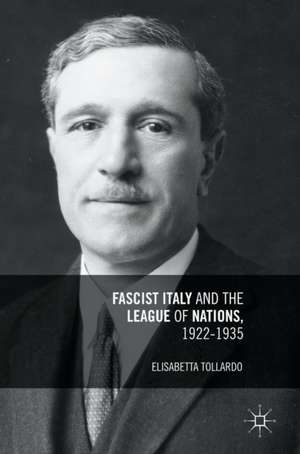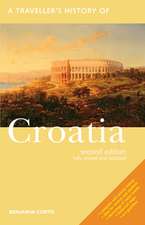Fascist Italy and the League of Nations, 1922-1935
Autor Elisabetta Tollardoen Limba Engleză Hardback – 4 noi 2016
| Toate formatele și edițiile | Preț | Express |
|---|---|---|
| Paperback (1) | 639.73 lei 6-8 săpt. | |
| Palgrave Macmillan UK – 20 iun 2018 | 639.73 lei 6-8 săpt. | |
| Hardback (1) | 644.49 lei 6-8 săpt. | |
| Palgrave Macmillan UK – 4 noi 2016 | 644.49 lei 6-8 săpt. |
Preț: 644.49 lei
Preț vechi: 758.23 lei
-15% Nou
Puncte Express: 967
Preț estimativ în valută:
123.32€ • 129.10$ • 102.04£
123.32€ • 129.10$ • 102.04£
Carte tipărită la comandă
Livrare economică 05-19 aprilie
Preluare comenzi: 021 569.72.76
Specificații
ISBN-13: 9781349950270
ISBN-10: 1349950270
Pagini: 307
Ilustrații: XV, 319 p. 7 illus.
Dimensiuni: 148 x 210 x 25 mm
Greutate: 0.53 kg
Ediția:1st ed. 2016
Editura: Palgrave Macmillan UK
Colecția Palgrave Macmillan
Locul publicării:London, United Kingdom
ISBN-10: 1349950270
Pagini: 307
Ilustrații: XV, 319 p. 7 illus.
Dimensiuni: 148 x 210 x 25 mm
Greutate: 0.53 kg
Ediția:1st ed. 2016
Editura: Palgrave Macmillan UK
Colecția Palgrave Macmillan
Locul publicării:London, United Kingdom
Cuprins
Introduction.- 1. The Italian State and the League of Nations.- 2. Italian Civil Servants in the League of Nations’ Secretariat.- 3. Italian Civil Servants and Fascism in Geneva.- 4. Italian Expertise and the League of Nations.- 5. The ‘Internationalisation’ of the Italians in the League.- Conclusion.
Notă biografică
Elisabetta Tollardo received her doctorate in history from the University of Oxford, UK. Her dissertation was awarded the British International History Group Thesis Prize in 2015.
Textul de pe ultima copertă
This book analyses the relationship between Fascist Italy and the League of Nations in the interwar years. By uncovering the traces of those Italians working in the organization, this volume investigates Fascist Italy’s membership of the League, and explores the dynamics between nationalism and internationalism in Geneva. The relationship between Fascist Italy and the League of Nations was contradictory, shifting from active collaboration to open disagreement. Previous literature has not reflected this oscillation in policy, focusing disproportionally on the problems Italy caused for the League, such as the Ethiopian crisis. Yet Fascist Italy remained in the League for more than fifteen years, and was the third largest power within the institution. How did a Fascist dictatorship fit into an organization espousing principles of liberal internationalism? By using archival sources from four countries, Elisabetta Tollardo shows that Fascist Italy was much more concerned with, and involved in, the League than currently believed.
Caracteristici
Interprets Italy’s League of Nations membership through the eyes of those involved Furthers our understanding of Fascist Italy’s international relations Uses multi-archival research from four countries to give a rounded picture
















